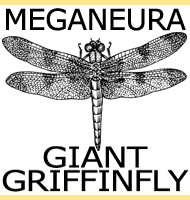


Chimerarachne
Name:
Chimerarachne
(Chimera spider).
Phonetic: Ky-me-rah-rak-nee.
Named By: Bo Wang, Jason A. Dunlop, Paul A.
Seldon, Russel J. Garwood, William A. Shear, Patrick M�ller
& Xiaojie Lei - 2018.
Classification: Animalia, Arthropoda,
Chelicerata, Arachnida, Tetrapulmonata.
Species: C. yingi (type).
Diet: Insectivore.
Size: Main body length 2.5 millimetres long,
tail about 3 millimetres.
Known locations: Myanmar.
Time period: Roughly around the Early/late
Cretaceous boundary.
Fossil representation: Five individuals preserved in
amber, at least four of which are male.
The
easiest way to describe Chimerarachne is as a
spider with a tail, a
tail similar to those seen in some whip scorpions. However, most
researchers agree that while Chimerarachne looks
similar to a spider it
probably wasn’t a ‘true’ spider. Instead, Chimerarachne
represents group of arachnids that might have had a shared ancestry
with true spiders. In the earliest radiation of forms there would
have been many spider-like forms, but only one evolutionary line
leading to true spiders. How close Chimerarachne
is placed to true
spiders currently depends more upon interpretation of features between
this specific genus and the true spiders as a group.
The
body of Chimerarachne is composed into two
segments, cephalothorax
and abdomen. The abdomen of Chimerarachne is
segmented, a trait
seen in many primitive arachnids and spiders, including those of the
Mesothelae group of spiders, some of which are still alive today.
Chimerarachne had eight legs as well as a pair of
pedipalps. At the
time of writing four known species of Chimerarachne
display palpal
bulbs, organs that are used for transferring sperm during mating
indicating that these individuals were males. The structure of these
palpal bulbs is simpler than those seen in the previously mentioned
Mesothelae spiders, with greater similarity to mygalomorph spiders
(ground dwelling spiders such as tarantulas and trapdoor spiders.
Chimerarachne also had fangs, and like those of
true spiders,
these were hairless. At the time of writing it is impossible to say
if Chimerarachne was venomous, and if so how
potent the venom, if
present, was.
Of
course the standout feature of Chimerarachne is the
thin whip-like
tail. What this tail was for is unknown, it may simply have been a
primitive feature that had been retained from arachnid ancestors
hundreds of millions of years before. However, nature has a way of
reducing useless unused body parts that serve no practical or display
function, so the observation that the tail is still present after so
long lends some weight as to the tail once serving some kind of
function, even if it was only vestigial by the Cretaceous.
Chimerarachne
also possessed spinnerets, though in a very different arrangement to
those seen in true spiders. Two pairs of these are very well
developed and similar to those seen in the Mesothelae spiders. There
are two additional pairs of stubs that might represent two additional
pairs of spinnerets, possibly in the process of being formed.
Chimerarachne would have certainly been a predator
of other small
invertebrates of similar or smaller size. The fact that all known
specimens of Chimerarachne have been found trapped
in amber suggests
that Chimerarachne may have hunted upon the trunks
and branches of
trees, either actively searching for prey or maybe lurking within
cracks and ambushing creatures as they passed by.
Further reading
- Cretaceous arachnid Chimerarachne yingi gen.
et sp. nov.
illuminates spider origins. - Nature Ecology &
Evolution. 2 (4): 614–622. - Bo Wang, Jason A.
Dunlop, Paul A. Seldon, Russel J. Garwood, William A.
Shear, Patrick M�ller & Xiaojie Lei - 2018.
- Origin of spiders and their spinning organs illuminated by
mid-Cretaceous amber fossils. - Nature Ecology &
Evolution. 2 (4): 623–627. - Diying Huang, Gustavo
Hormiga, Chenyang Cai, Yitong Su, Zongjun Yin, Fangyuan Xia
& Gonzalo Gribert - 2018.
Random favourites
 |
 |
 |
 |




